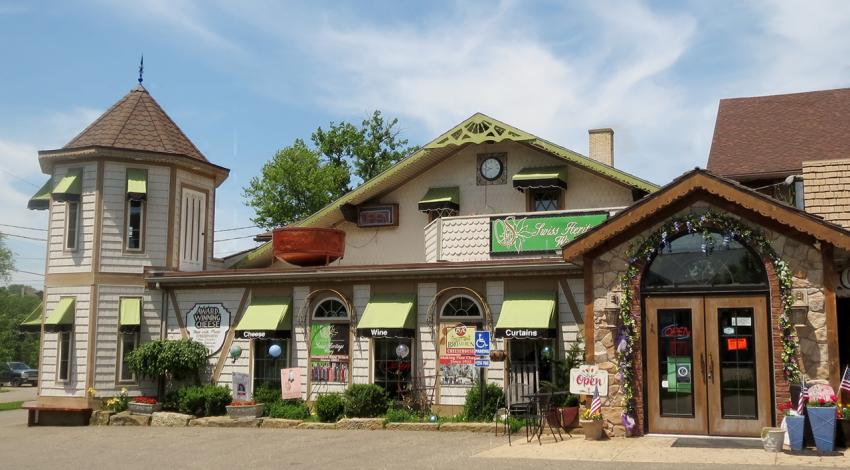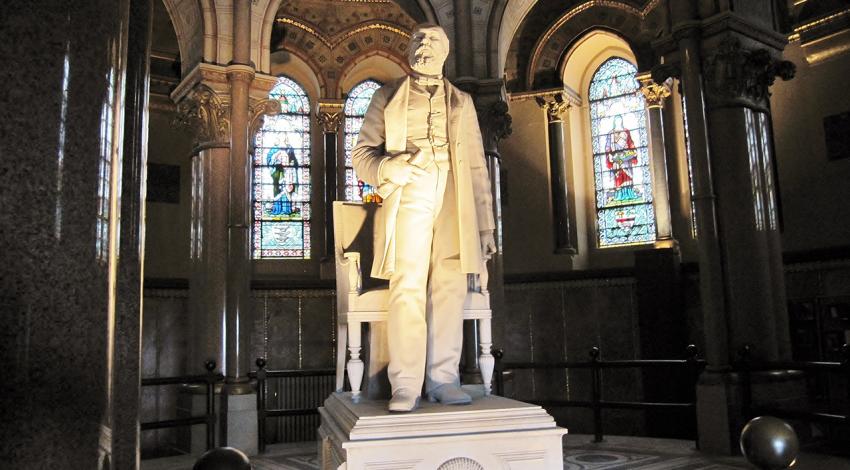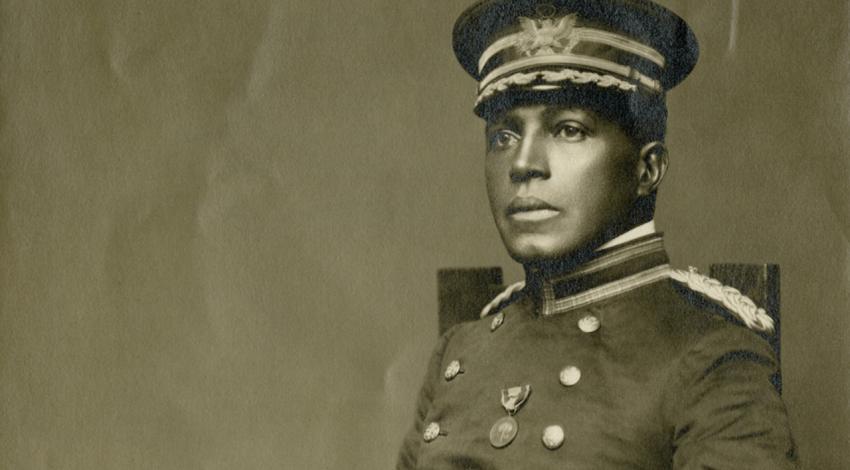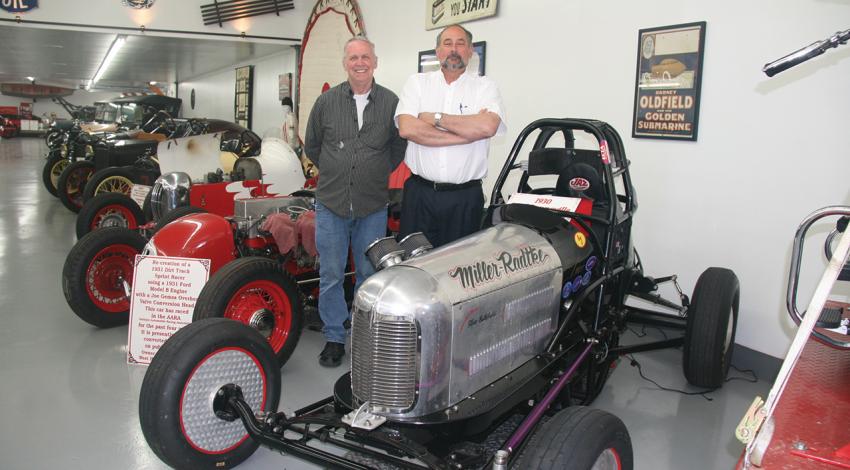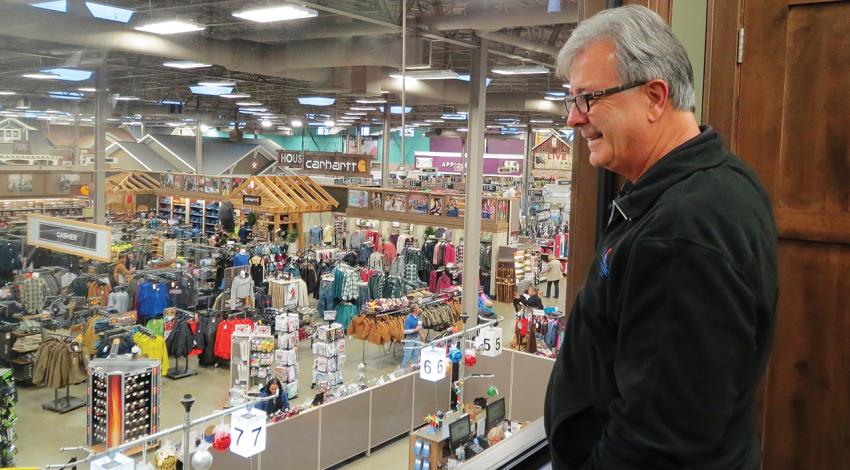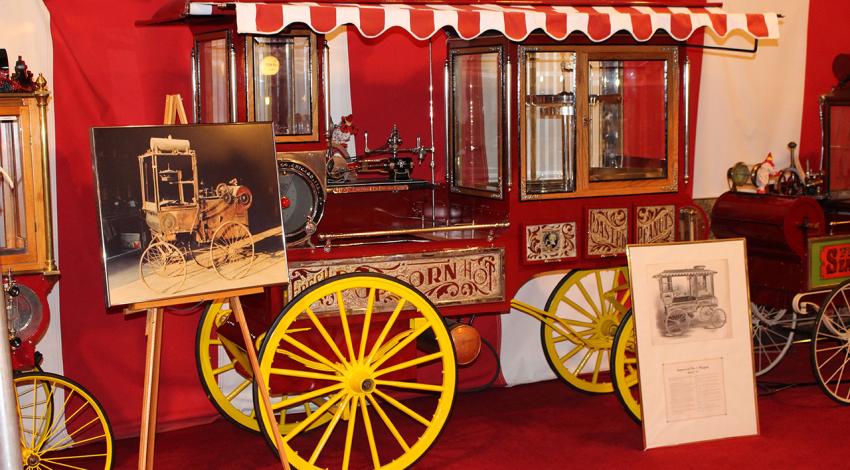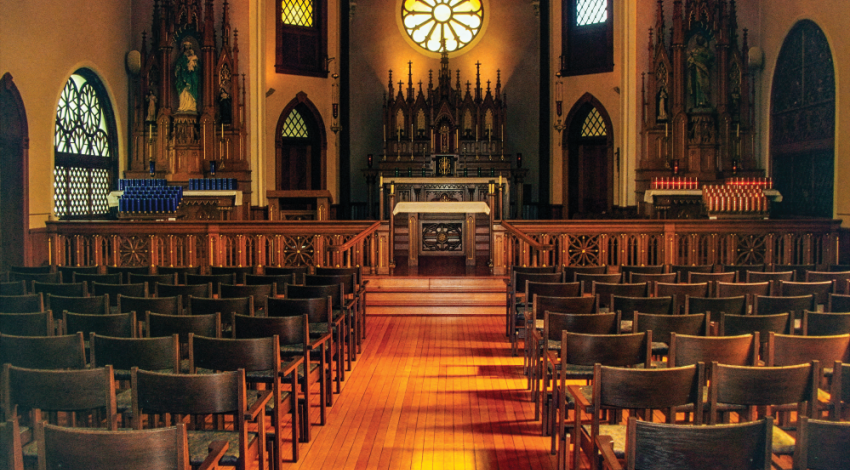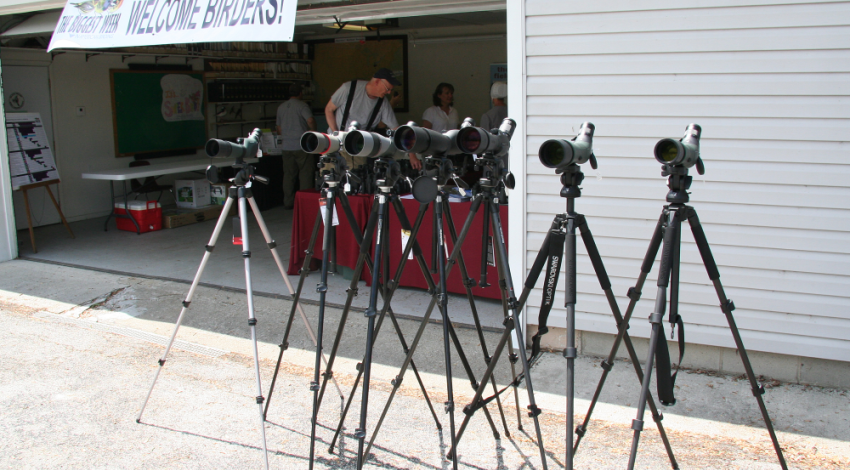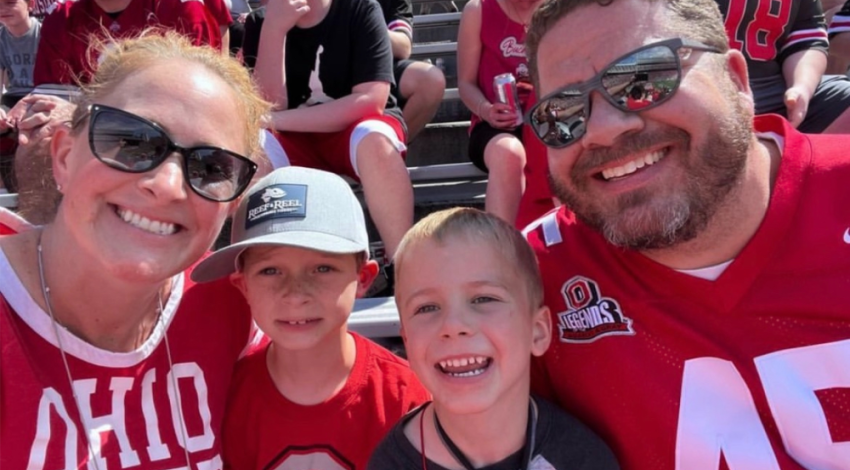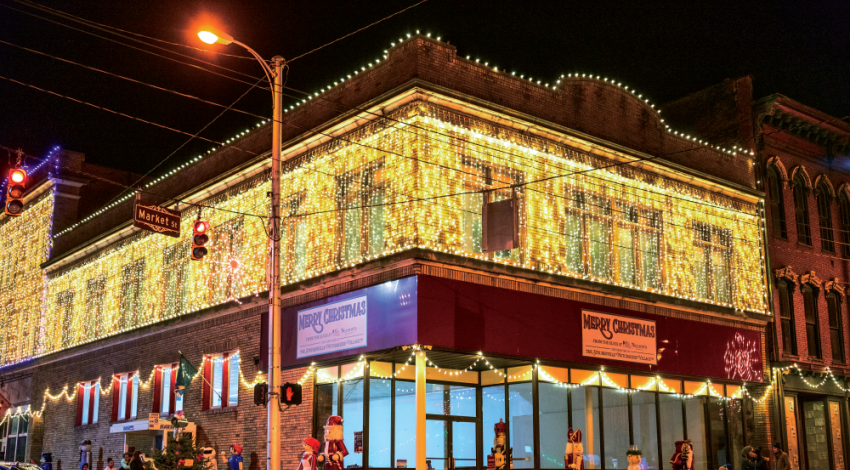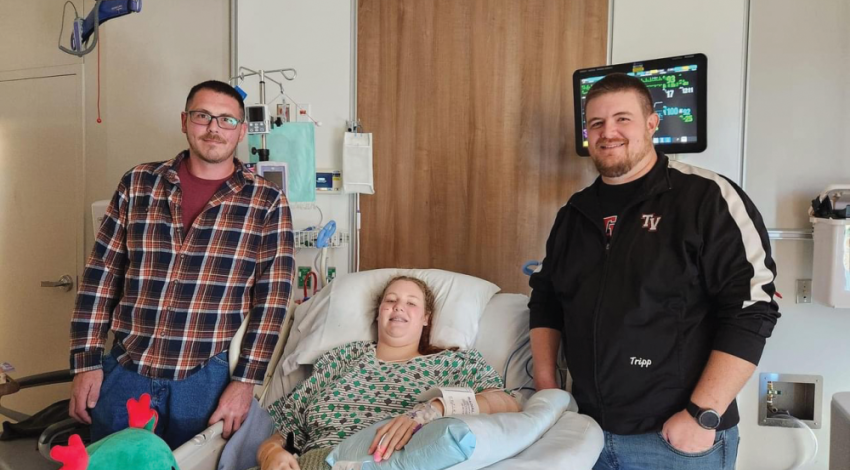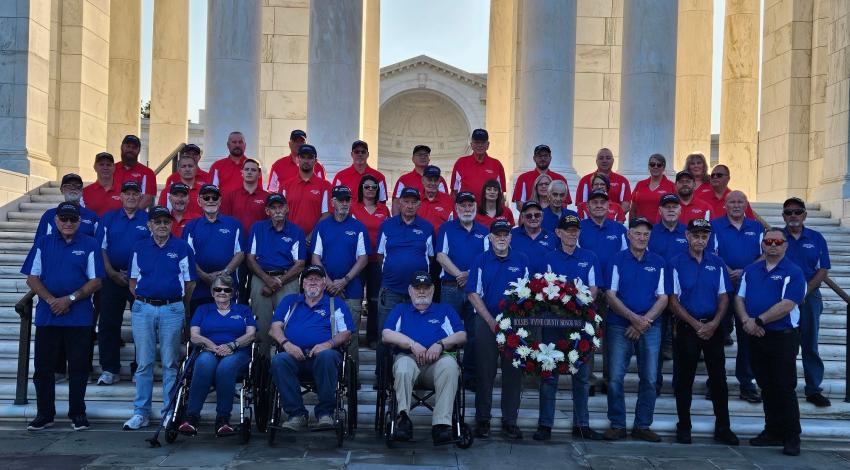Rudy Dalrymple leaves his room at the Ohio Veterans Home in Sandusky between 5 and 5:30 a.m. most days, and settles into a comfortable padded chair behind his sturdy worktable. Using crepe paper, wire, cloth tape, and his trusty wooden crimping tool, he forms delicate poppy blossoms, one after another, again and again, until he’s surrounded by a mound of flowers, which are destined for American Legion auxiliaries across Ohio to use in their major fundraising efforts around Memorial Day.
Ohio history
Location: On the east side of Cleveland in Lake View Cemetery.
Provenance: Founded in 1869, Lake View Cemetery was among the nation’s first garden-style cemeteries, and President James A. Garfield, who was born and raised near Cleveland, had expressed his desire to make its scenic grounds his final resting place. Shortly after his inauguration, Garfield was shot by a disappointed office-seeker and lingered for two months before dying on Sept. 19, 1881.
It’s a little-known fact that several Ohio agricultural cooperatives — livestock producers, dairy farmers, and crop associations — can trace their roots to the Ohio Farm Bureau Federation. The same holds true for Ohio’s Electric Cooperatives (OEC) members.
Charles Young was born into slavery in Mays Lick, Kentucky, in the time just after Abraham Lincoln delivered the Emancipation Proclamation and just before the ratification of the 13th Amendment, which abolished slavery.
His parents, technically still considered runaway slaves, carried him as an infant across the Ohio River to the freedom granted them when his father enlisted in the Union Army.
The Salty Dog Museum, a top-notch assemblage of Model T and A Fords in Shandon, Ohio, came into being out of necessity for Ron Miller, his son B.J., and their friend Mark Radtke.
Before they opened the museum, the vehicles were spilling out of their backyards and garages.
“Everybody collects something, and we happen to collect antique vehicles and their stories,” Radtke says.
Large windows inside Howard Miller’s office give him a prime view of Hartville Hardware’s main floor; he often leaves his desk to watch folks navigating his store.
Down on the sales floor, shoppers might run across anything from a bright green John Deere Gator to a hot pink, Lil’ Pig Traeger grill. From time to time, someone looks up, spots Miller at the window, and waves. Miller always eagerly waves back. “I grew up with so many people that work and shop here,” he says.
No matter how big a hero he became, through his pioneering work as a test pilot and astronaut or his service to the state and country as a United States senator, John H. Glenn Jr. never forgot his rural roots — and that made him a friend to electric co-op members everywhere, says Darrel “Cubby” Cubbison, the retired longtime member services manager at Guernsey-Muskingum Electric Cooperative.
Heading along Ohio’s Interstates and limited access highways, we sometimes forget there are amazing attractions at some of the exits.
Just off US Route 23 is Wyandot Popcorn Museum, located in downtown Marion. Famous for collecting and restoring the world’s largest collection of popcorn antiques and peanut roasters, the collection will fascinate anyone interested in antiques, collectables, and wonderful memories of another time. Two examples are more than 100 years old.

